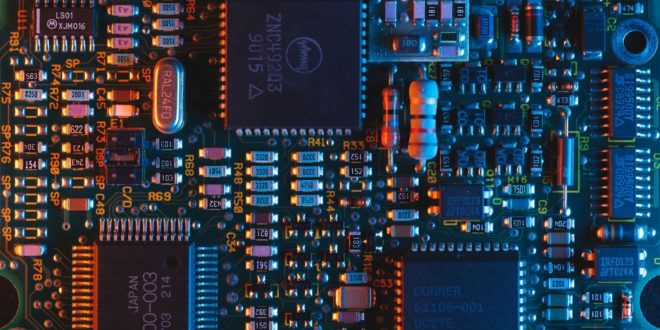A circuit breaker is an electronic component, or you can say a switching device, that can open and shut a circuit in a fraction of a second. This happens under both normal and fault conditions. Circuit breakers are often utilized to disconnect the Load circuit from the power supply. A circuit breaker is used to regulate the electricity to a load in the event of any kind of abnormal circumstance.
Circuit breakers are a kind of automated equipment. They are categorized according to the medium used to quench the arc. In high power applications, three kinds of circuit breakers are often used. They are ACB (Air circuit breaker), VCB (Vacuum Circuit breaker), and SF6 Circuit breaker (Sulfur hex fluoride breaker).
In this post, we’ll look at the key distinctions between ACB (Air circuit breaker) and VCB (Vacuum Circuit breaker) in the simplest manner.
Introduction to VCB
A vacuum circuit breaker is commonly referred to as a VCB (in short form). It is a sort of circuit breaker in which the arc is quenched in a vacuum. The technique is best suited to any kind of medium voltage application.
What about when the voltage is higher? Well, this vacuum technology has been developed, however, it is not economically practical. In a vacuum chamber, the closure and opening of the current-carrying association arc interruption and contacts occurs. It is found in a vacuum interrupter, which is a kind of circuit breaker.
This is made up of a steel arch chamber at the center. It is symmetrically placed in ceramic insulators. A vacuum interrupter generally maintains a vacuum pressure of about 10-6 bar. The material used for current-carrying contacts is critical to VCB performance. Indeed, Cr/Cr is an ideal material when it comes to vacuum circuit breaker connections.
Pros of Vacuum Circuit Breaker
- The vacuum has the highest insulating strength. As a result, it has much greater arc quenching qualities than any other known media
- There will be no gas emissions into the atmosphere
- VCB requires practically little maintenance
- The operation is completely silent
- There is no fire danger
- The explosion is avoided, which increases the safety of the operational employees
- The life of VCB is greater due to many reasons
Cons of Vacuum Circuit Breaker
- When designed in small numbers, the manufacture of VCB is not at all cost-effective
- At greater voltages, the breaker’s cost becomes prohibitively expensive for consumers. This is due to the fact that high voltages of more than two circuit breaker numbers must be coupled in series
- The fundamental disadvantage of VCB is that it is inefficient, in terms of voltages above 38 kV.
Introduction to ACB
An air circuit breaker is referred to as an ACB commonly. It is an electrical device used to provide:
- short-circuit protection
- overcurrent protection
- for electrical circuits over 800 to 10K amps
These devices may be found in distribution panels. ACB is an arc extinguishing circuit breaker that operates in the air as an arc extinguishing medium. There are several types of switching gears and ACB available on the market today. The majority of them are high-performing, very long-lasting, and easy to install and maintain. ACB has completely replaced oil circuit breakers in this modern era. A number of quality Levapack tin packaging machine and similar equipment now uses this technology.
Pros of ACB
- ACBs are used to regulate industrial facilities (such as big valve manufacturing companies in coimbatore) and power plant auxiliaries
- They safeguard industrial facilities and electrical machineries like generators, capacitors, and transformers
- ACB, as well as NGD at least 15kV, are used in the power-sharing scheme
- ACB has a high resistance power, which aids in increasing arc resistance via extending, cooling, and splitting
- The ACB’s air brake technology is used in AC and DC circuits up to 12kV
Cons of Air Circuit Breaker
- The chute’s de-ionizing and extending function is not less efficient. The arc motion to the chute, on the other hand, is much more likely to develop slower
- It is inefficient at low currents, whereby electromagnetic fields are vulnerable
Key Differences Between ACB & VCB
- ACBs are only used for low voltage applications with voltages less than 690 volts. These are often known as LT applications (Low tension). VCBs are utilized for medium voltage applications with voltages less than 33 kV.
- In ACB, open-air is utilized as an arc quenching medium. But in VCB, vacuum (negative pressure) is employed, with vacuum pressures maintained between 10-2 and 10-6 torr.
- ACBs are typically rated from 630Amps to 6300Amps for LT applications, whereas VCBs are rated from 630 Amps to 4000 Amps.
- The arc quenching medium determines the short circuit breaking capability. Because ACB contains less air, it is readily ionized, and ionized air works as a conducting medium. The short circuit breaking capability of VCB is quite great (free electrons are not at all allowed in the case of vacuum).
- ACBs are often used for the LT MCC, the distribution transformer’s Secondary feeder circuit, or also in the LT PCC. On the other hand, VCBs are utilized to start greater HP motors.
Final Thoughts
We hope the above basic guide elaborating the difference between ACB and VCB was helpful. Both the circuits are easy to understand unless you have the right information. For more information similar to the above one, keep following our blog.



